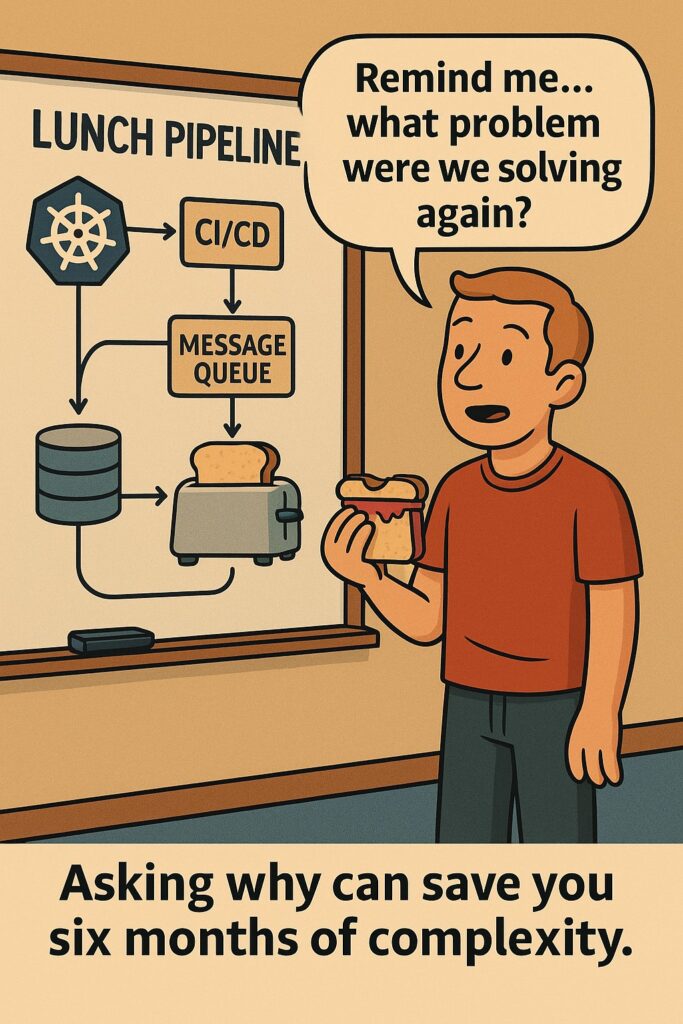Why leadership isn’t about having answers—it’s about asking the right questions

Leadership often feels like it should be about clarity. Having the answers. Pointing the way forward. But in reality, the best leaders are the ones who pause long enough to ask the right questions. Especially when everyone else is charging ahead.
Whether you’re in a strategy meeting, reviewing a PR, or watching your team spin their wheels on a problem, your job isn’t just to react—it’s to zoom out and get curious.
Because your team will always bring you work. The question is: does it matter?
What Are We Actually Trying to Accomplish?
When priorities blur and tasks pile up, the best question you can ask is, “What is our actual goal?”
Are we optimizing for uptime? Speed of delivery? Platform reliability? Developer happiness?
If your team doesn’t know the guiding principle, they’ll optimize for what’s loud or urgent. Not what moves the needle.
Try these in your next meeting:
- “What goal is this work laddering up to?”
- “Is this aligned with our quarterly priorities?”
- “Would not doing this hurt us?”
And if no one knows the answer? That’s a signal—not a failure.
Why Are We Doing It This Way?
People inherit processes like they inherit furniture. Eventually, someone has to ask why the couch is in the kitchen.
In your story about the CTO asking about the giant query—it wasn’t a critique. It was clarity. A fresh voice saying, “Is this still the best approach?”
These questions shake loose assumptions:
- “What are we solving with this?”
- “What would happen if we removed this step?”
- “Is there a simpler version of this?”
They don’t have to be deep. They just need to be honest. And open-ended.
What’s the Real Problem Here?
Teams often present symptoms, not problems. A flaky test. A slow deployment. A noisy alert.
Leaders dig deeper. Not to challenge the team, but to help them pause and reflect.
Try reframing:
- “What’s the root cause?”
- “If we fix this, what improves?”
- “Is this the problem or a signal of something bigger?”
Good questions help your team escape the cycle of whack-a-mole and actually solve things that stay solved.
What Happens If We Do Nothing?
This is one of the most underused questions in engineering leadership.
It stops the momentum of false urgency. It exposes trade-offs. It invites people to imagine outcomes, not just actions.
Use it when:
- People want to refactor something with no user pain.
- A new tool is being introduced for vague reasons.
- Teams argue over edge cases instead of shipping.
Sometimes doing nothing is the smartest move. But it takes leadership to name it.
Wrap-Up: Good Questions Make Better Teams
You don’t have to know everything as a leader.
But you do need to create space for thinking. And that happens through questions—clear, curious, persistent ones that remind your team of the bigger picture.
So next time someone brings you a task, an incident, or a new proposal, don’t dive into the weeds.
Step back. Ask, “What are we really trying to do?”
That one question might be the unlock your team needs.
💡Liked this post?
Get real-world solutions like this in your inbox—join the newsletter.